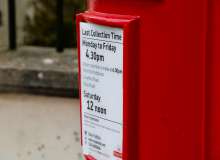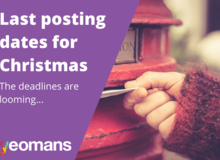
What are the recent changes to Gift Aid all about?
ByClaire Fuller |NewsFundraising |20 April 2017What is Gift Aid?
Originally introduced by HMRC in 1990, Gift Aid is a tax incentive that enables charities to claim back the basic rate tax (25p) from the government on every pound that has been donated to them by supporters. Gift Aid can only be reclaimed on money that’s been donated by UK taxpayers so in order for Gift Aid to be claimed, the donor must have given their permission by completing a basic declaration which confirms that they are a UK taxpayer.
What changes were made to Gift Aid on 6th April 2017?
Since its introduction there have been several amendments to the Gift Aid Scheme, the most recent of which came into effect on 6th April 2017 as detailed here:
- Intermediaries that collect donations for charities are now able to ask donors for the authority to create Gift Aid declarations on their donations for the rest of the tax year
- This process won’t affect any current or future enduring Gift Aid declarations
- Once authorisation has been gained, it will be deemed to last for the remainder of the tax year, unless the donor cancels it
- If you obtain authority on or after the 1st March, you can make Gift Aid declarations for the remaining tax year and all of the next tax year, which starts on 6th April
- A donor must be able to contact you to cancel their authorisation at any time and to specify a date that they’d like to cancel it. If a date for cancellation is not specified, then the authorisation must be deemed to have stopped immediately
- Donors must be advised that they will be responsible for paying the difference if they pay less Income Tax and Capital Gains Tax than the amount of Gift Aid on their donations in a tax year
- Intermediaries must provide donors with an annual statement (between 5th April and 31st May) that explains the total amount of the donations that were Gift Aided, and the maximum amount of Gift Aid that can be claimed on their Gift Aided donations for the previous tax year. The statement should also include an explanation that donations directly to charities or other intermediaries are not included and confirmation that the donor will have to pay the difference if they pay less Income Tax and Capital Gains Tax than the amount of Gift Aid claimed in the year. A statement does not need to be sent to a donor if they only made 1 Gift Aid donation in the tax year, or they donated less than £20 in total in the year
- Intermediaries must keep donor records for at least 6 years and these records should include detail of the:
- date authorisation was given
- donor’s name and address
- date of any cancellations
- explanation that the donor must pay more tax than the Gift Aid on their donations and the date this was given
- annual statement (or detail on how you made the annual statement available to the donor)
- Intermediaries must be able to provide these records to HMRC on request
The Gift Aid Small Donations (GASD) Scheme
Under the GASD scheme, charities (or Community Amateur Sports Clubs) may be able to claim 25% Gift Aid on donations of £20 or less without a Gift Aid declaration.
In order to claim under GASDS you must have claimed Gift Aid:
- In the same year as you want to claim GASDS
- Without getting a penalty on a Gift Aid or GASDS claim in the last 2 tax years
- In at least 2 of the last 4 tax years (without a 2-year gap between claims) if you’re claiming on donations made before 6th April
It’s also important to note that you can’t claim GASDS on donations that come with a valid Gift Aid declaration, membership fees, or as a £20 portion of a larger gift. Your GASDS claim also can’t be more than 10 times your Gift Aid claim and must be claimed within 2 years of the end of the tax year that you collected the donations.
Since 6th April 2017 the rules for GASDS have changed as follows:
- Gift Aid can now be claimed on donations (of £20 or less) made using “contactless” technology, such as a contactless credit or debit card (previously GASDS only applied to cash donations). You need to keep records (for 6 years) produced by the contactless terminal which show:
- How much money was collected
- The date the money was collected
- That no individual donation was more than £20
- The “matching rule” has been introduced which requires that claims on Gift Aid and small donations are made in the same tax year as they were received and that the maximum amount of small donations top-up payments is the LOWER of:
- £8,000
- 10 times the amount of donations you’ve claimed Gift Aid on
- Charities that choose to claim a GASDS top-up payment under the community building rules can now claim on donations collected at any time (not just during a charitable activity) as long as they were collected in the same Local Authority area as the building that they are claiming for. To claim in this way you must therefore keep a record of:
- The address and postcode of the community building
- The address (or addresses) where the donations were collected and the date of each collection
- Detail about how and when that building met the charitable activity requirements
- The 2-year eligibility rule and Gift Aid history requirement (two-in-four rule) has been completely removed to allow more smaller and newer charities to benefit sooner
- If your charity (or CASC) is connected to another charity or CASC you can pool small cash donations and share an allowance of £8,000. Connected charities can only claim on small donations collected in the same Local Authority area as their community buildings.
- If you’ve merged with another charity since 6th April 2017 you don’t need to follow the merger process – because you no longer need to have a Gift Aid history so you can start claiming GASDS straight away if you are claiming Gift Aid in that tax year
For further information and to answer any specific questions about Gift Aid, GASDS and how the changes apply to your organisation please contact HMRC, or contact us to explore ways that we can help you with your future fundraising.
References/Acknowledgements












Comments